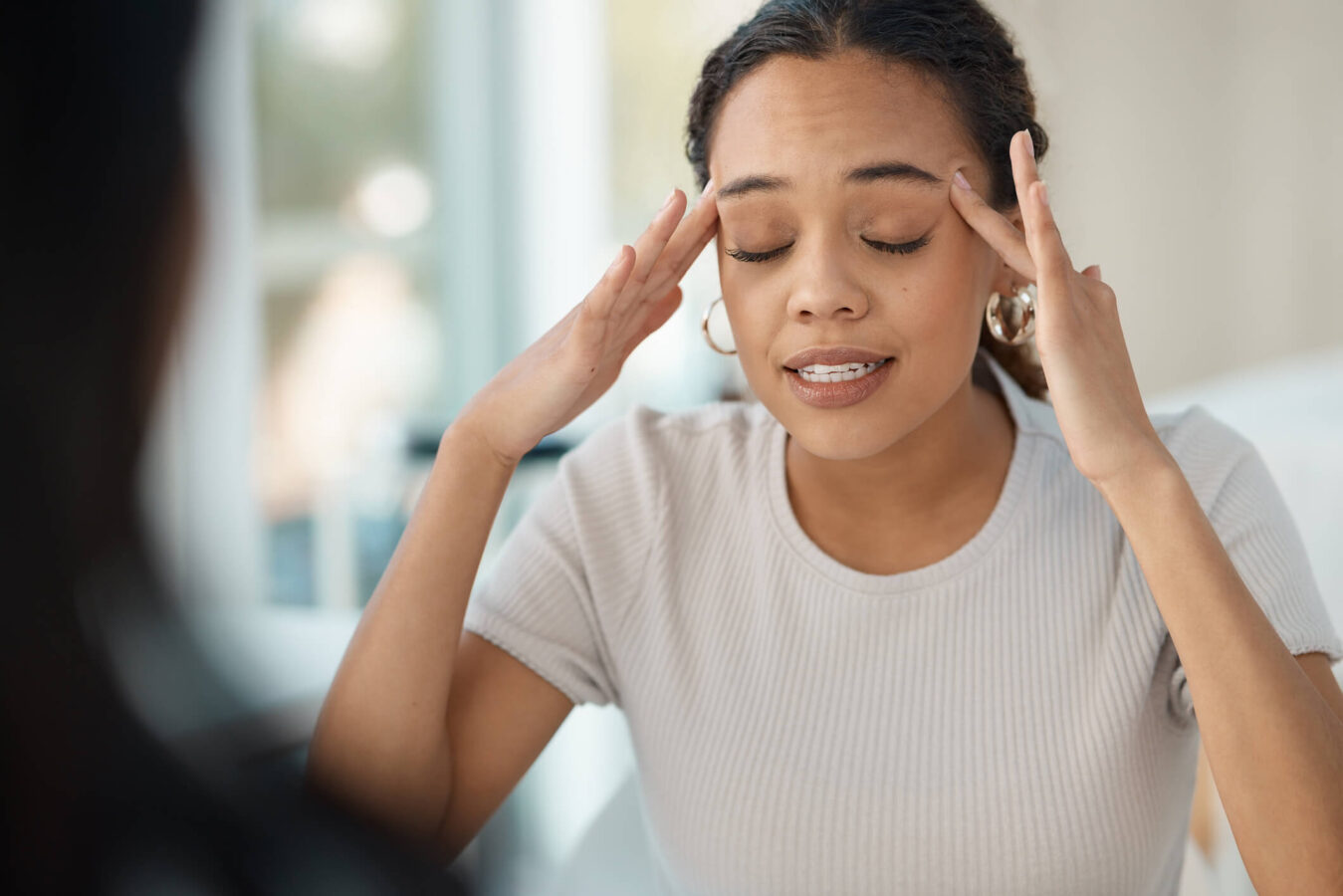
Of the many different types of headaches that cause pain and other symptoms, tension headaches are the most common. It is estimated that two in three adults in the United States will experience tension headaches at some point. While this condition is usually not linked to serious health problems, a tension headache can significantly impact your quality of life, especially if you have chronic headaches. This article will examine how physical therapy can help with tension headaches and some other treatments to reduce their intensity and frequency.
A headache is the most common form of physical pain people experience, and a leading cause of missed work and school days, according to the National Institute of Neurological Disorders and Stroke.
Signs and symptoms of tension headaches include dull pain and pressure around the forehead that seems to come on slowly. It is often described as a tight, squeezing band around the top of the head that can last anywhere from 30 minutes to a few days or even weeks. Pain is typically mild to moderate and spans to both sides of the head. The head, neck, and shoulders often feel tender to the touch.
Tension headaches are classified two ways:
Episodic tension headaches last anywhere from a half-hour to a week. Someone with frequent episodic tension headaches has symptoms less than 15 days per month.
Chronic tension headaches last for hours, often continuously. Tension headaches that occur more than 15 days per month for at least three months are considered chronic.
It’s not always easy to distinguish one type of headache from another. According to some estimates, there are as many as 100 or more types of headaches recognized by the medical community.
Tension headaches are often confused for migraines because they share come common symptoms. And it’s also possibly to experience both types of headaches. There are a few key differences between the two.
Unlike some headaches, tension headaches don’t generally cause nausea, vomiting, or sensitivity to light and sound. Also, physical activity seems to aggravate migraine symptoms, but does not make tension headache pain worse.
We don’t know exactly what causes tension headaches, but genetics, nutrition, environmental factors, and muscle contractions all seem to play a role. Tension headaches are linked to certain triggers that are unique to each person.
A headache trigger is something you do, or something that happens to you that results in an episode. Nearly anything can be a trigger—from something you consume, to stressful situations happening in your own life.
Here is a list of common triggers that contribute to tension headaches:
It’s incredibly helpful to know your own tension headache triggers—so you can take steps to avoid them. We recommend keeping a headache journal to record each episode.
As soon as you notice headache pain, write down when it starts, how long it lasts, and details about the days and hours leading up to your symptoms. Did you sleep well? Did you consume alcohol? What did you eat? Make a note of the weather, your mood, and your menstrual cycle (for women.)
Over time, you’ll notice common patterns in the days leading up to a headache. This way you can be more proactive in your approach and possibly prevent your next headache.
Treating tension headaches can be a process of trial and error. A lot has to do with knowing your individual triggers and managing or avoiding them. Beyond that, an integrated approach to headache management that addresses emotional, physical, and environmental factors can be highly effective.
While tension headaches have a many underlying causes, a common contribution is muscular and joint stiffness. Physical therapy is beneficial for patients with tension headaches because it can address underlying musculoskeletal conditions contributing to tension headaches and symptoms radiating into your head, neck, and shoulders.
Strengthening and stretching exercises help decrease muscle tension and improve joint mobility to allow pain-free movement and function.
Manual therapy involves a wide range of evidence-based, hands-on techniques to improve mobility and reduce pain in the body’s joints and soft tissues. Addressing the upper cervical spine joints and muscles can relieve pain from tension headaches.
Physical therapy also uses innovative therapies like dry needling to release sore, tight muscles, and traction to ease discomfort in the neck or back that may be caused by or adding to tension headaches.
Physical therapists also educate patients on how to identify triggers and modify their lifestyle to avoid foods, habits, and activities that lead to headache pain. In addition to physical therapy, these additional changes and treatments may help reduce the frequency and severity of tension headaches.
to reduce headaches and improve function include biofeedback, abdominal breathing, and progressive muscle relaxation.
Even if you suspect your headache is stress or tension-related, it’s best to see your healthcare provider for an accurate diagnosis and to rule out other health conditions. Headache pain doesn’t have to be a fact of life; relief is available. Find a physical therapy clinic near you.